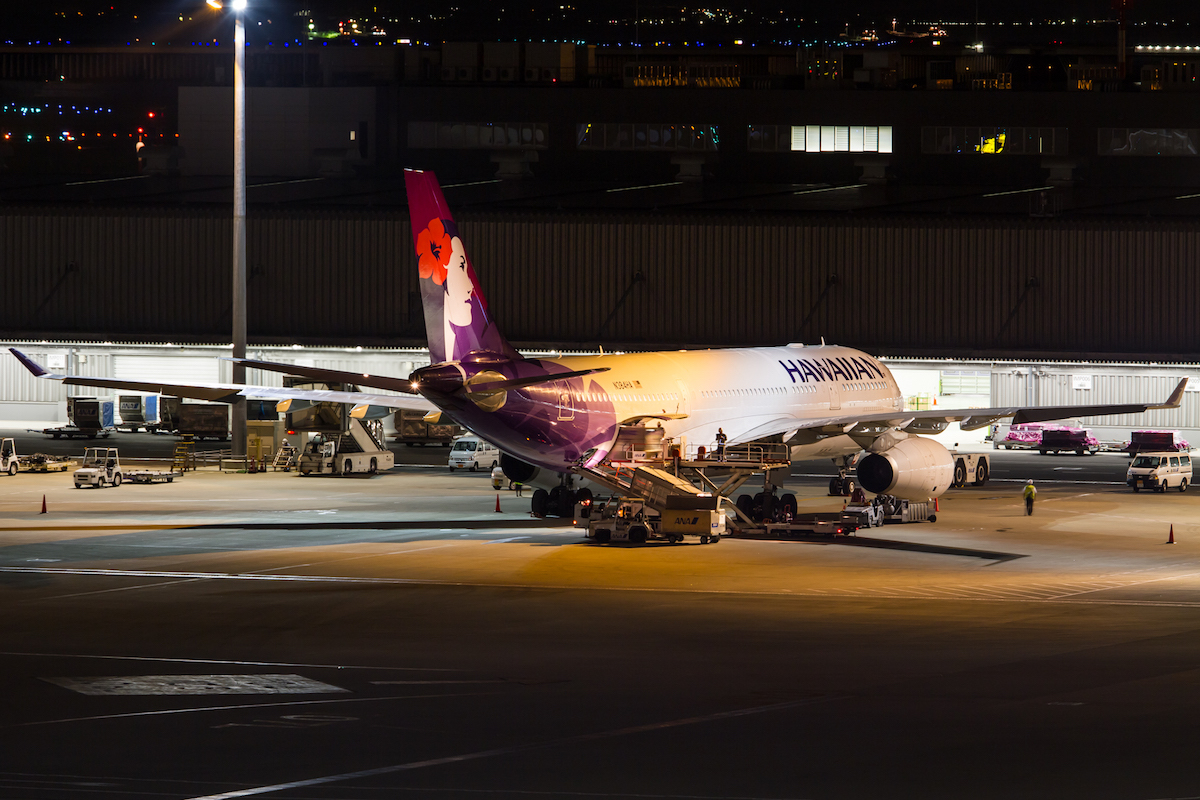Hawaiian Airlines plans to resume all of its flights to Tokyo Haneda this winter that were suspended during the pandemic, CEO Peter Ingram said. The move comes as United Airlines seeks some of those flights to expand its own presence at the popular Tokyo airport.
“We do have Kona coming back with nonstop service,” Ingram told Airline Weekly. “We are not planning to operate that at our full three frequencies a week all through the season but we do intend to resume service into Kona and ramp it up as demand recovers.”
Schedules show Hawaiian operating the two of the three daily Haneda flights awarded it by the U.S. Department of Transportation this November, Cirium Diio data show. That includes resuming Kona-Tokyo flights on October 29.
What happens to Hawaiian’s third daily flight, which the DOT awarded it in August 2019 but never operated due to the Covid-19 pandemic, is an open question.
Flights to Haneda, which owing to its close proximity to central Tokyo is more popular with local travelers than Narita airport, are closely managed by the DOT. U.S. airlines can operate 18 daily flights — 17 during daytime hours and one at night — that were awarded by the regulator through a public proceeding. Delta has seven daily flights, United five, and American and Hawaiian three each.
Airlines must use their Haneda flights or, if they are left idle for more than 90 days, risk the DOT revoking their authority. The regulator waived these usage rules during the pandemic. That waiver, however, is set to expire on October 29.
The end of the waiver, which Ingram said is “unlikely” to be extended, has prompted the fight over Hawaiian’s third daily Haneda flight.
Hawaiian “shows no plans to operate” its third daily Haneda flight, United claimed in an application with the DOT on Monday. As such, it argued, the regulator should reallocate the flight to the Star Alliance carrier for a new nonstop between Guam and Haneda — a route currently not served by either Japanese or U.S. airlines.
United is also seeking a daily flight for new Houston-Haneda service that Delta will return to the DOT on October 29. Atlanta-based Delta notified the regulator on September 22 that it would not resume nonstop service between Portland, Ore., and Tokyo that it was awarded the Haneda flight for in 2019.
Delta did not specify why it is ending Portland-Tokyo service. However, in May, it sought flexibility from the DOT to operate two of its seven Haneda flights from any U.S. gateway citing weak travel demand to and from Japan. The regulator denied the request.
In July, Delta and United reported robust revenue growth in their Pacific business segments, which include Japan. Headline revenue was up triple digits at both airlines in the second quarter owing to travel restrictions through much of the region the year before. More importantly, unit revenues measuring the amount each carrier makes per seat mile they fly, were up 29% at Delta and 20% at United from 2022.
“The momentum is there, which is helpful because that has been a part of our network that was lagging,” Ingram said when asked about the recovery in travel demand to and from Japan.
Foreigners arriving in the U.S. on flights from Japan stood at 65% of 2019 levels in August, the latest available data from the U.S. International Trade Administration show. That represents a 23 percentage point improvement from January when foreigner arrivals from Japan were at 42% of four years ago.
Hawaiian has been uniquely affected among U.S. airlines by the slow return of Japanese travelers. Prior to the pandemic, 85-90% of travelers on its Hawaii-Japan flights were Japanese, Ingram said. That is a much higher percentage than at American, Delta, and United which benefit from significant U.S. traffic on their flights thanks to connections over their hubs in the continental U.S.
American and United also benefit from Japanese partners. The former has a close joint venture partnership with Japan Airlines, and the latter a similar pact with All Nippon Airways. Hawaiian also has a more limited codeshare partnership with JAL.
American has yet to weigh in on the situation, whether to seek Delta’s flight or otherwise.
Schedules show American, Delta, and United all operating their full allotment of Haneda flights from October 29, according to Cirium Diio.





